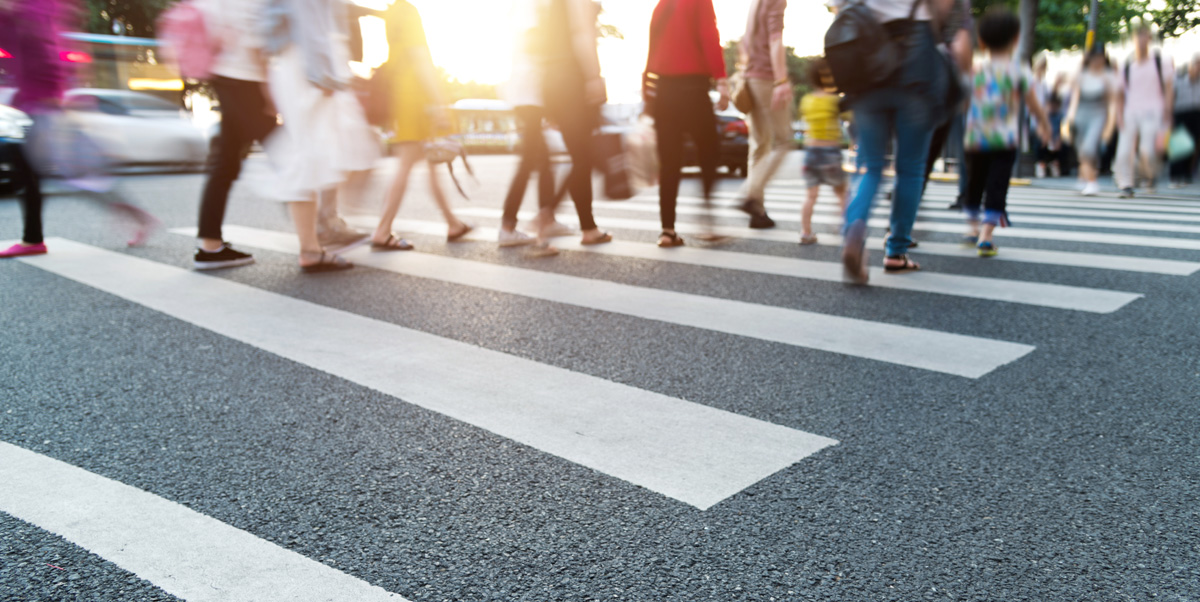How California’s Laws Protect Pedestrians in Accident Cases

When pedestrians are involved in accidents with vehicles in California, the law provides specific protections designed to safeguard their rights and ensure they receive fair compensation. California’s pedestrian-friendly laws recognize the vulnerability of those traveling on foot and aim to protect them through a combination of traffic regulations, right-of-way laws, and liability frameworks that often favor pedestrians in accident cases.
At NK Law Group, we understand the devastating impact a pedestrian accident can have on your life. Our experienced attorneys are dedicated to helping pedestrians navigate California’s legal system to receive the compensation they’re entitled to following an accident. With years of experience representing injured pedestrians throughout Fremont and Hayward, we have the knowledge and resources to advocate effectively for your rights.
California’s Pedestrian Right-of-Way Laws
California law establishes clear rules regarding pedestrian right-of-way, providing significant legal protection for those traveling on foot. Under California Vehicle Code Section 21950, drivers must yield the right-of-way to pedestrians crossing the roadway within any marked crosswalk or unmarked crosswalk at an intersection. This fundamental protection forms the basis of many pedestrian accident claims.
However, the law also specifies that pedestrians have certain responsibilities. While pedestrians are granted substantial rights, they must exercise due care for their safety. California law prohibits pedestrians from suddenly leaving a curb and walking into the path of a vehicle that is so close it creates an immediate hazard. Additionally, pedestrians are required to use crosswalks when available and not cross at locations where signs prohibit crossing.
When determining liability in pedestrian accident cases, California applies the principle of comparative negligence. This means that even if a pedestrian is partially at fault for an accident, they may still recover damages, though their compensation may be reduced by their percentage of fault. This system allows injured pedestrians to receive compensation even in cases where they may have contributed to the accident in some way.
Enhanced Protections in School Zones and Residential Areas
California law provides additional protections for pedestrians in specific high-risk areas, particularly school zones and residential neighborhoods. These enhanced protections recognize the increased pedestrian traffic and potential for serious accidents in these locations.
School Zone Protections
In areas near schools, California law establishes specialized protections:
- Speed limits are significantly reduced during school hours
- Additional signage and crossing guards may be present
- Penalties for traffic violations are typically higher than in other areas
- School buses have special stopping procedures that protect children crossing streets
These enhanced protections are particularly important for ensuring the safety of children, who may be less aware of traffic dangers. When drivers violate these special protections and cause accidents, they may face heightened liability in resulting legal claims.
Residential Area Considerations
In residential neighborhoods, California law establishes a standard speed limit of 25 mph unless otherwise posted. This reduced speed is designed to give drivers more time to react to pedestrians who may enter the roadway. The law recognizes that in residential areas, pedestrians may be more likely to cross mid-block or emerge from between parked cars.
Statute of Limitations and Damages Available
Understanding the timeline for filing a pedestrian accident claim and the potential damages available is crucial for accident victims seeking compensation in California. The law provides specific guidelines on these matters.
California’s statute of limitations generally gives pedestrians two years from the date of the accident to file a personal injury lawsuit. However, exceptions may apply that either extend or shorten this deadline. For example, if the pedestrian is a minor at the time of the accident, the statute of limitations may be extended. Conversely, if the claim is against a government entity, such as in cases involving a public bus or poorly maintained sidewalk, the deadline for filing a claim may be as short as six months.
Pedestrians injured in accidents may be entitled to several types of damages under California law. These typically include compensation for medical expenses, lost wages, pain and suffering, and emotional distress. In cases involving particularly egregious behavior by the driver, punitive damages may also be available. The specific amount of compensation will depend on factors such as the severity of injuries, impact on quality of life, and long-term prognosis.
Contact a California Pedestrian Accident Attorney
If you’ve been injured as a pedestrian in California, understanding your legal rights is essential to securing the compensation you’re entitled to receive. California’s pedestrian protection laws are designed to safeguard those who travel on foot, but navigating the legal system can be challenging without experienced guidance.
NK Law Group has a proven track record of successfully representing pedestrian accident victims throughout Fremont and Hayward. Our attorneys are members of the State Bar of California and the Consumer Attorneys of California, demonstrating our commitment to maintaining the highest standards of legal practice. We offer personalized attention and aggressive representation to ensure your rights are protected. To discuss your case with our experienced team, call us at (510) 519-9497 or contact us through our contact form.

EXPERTLY REVIEWED BY
Naseer Khan, Esq.
May 7 2025
Top-rated personal injury attorney Naseer Khan, Esq. has over a decade of experience advocating for injury victims in California. As an award-winning attorney and a member of the American Association for Justice, Khan has a stellar track record of success and devotion to justice for his clients.
